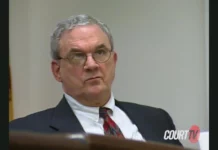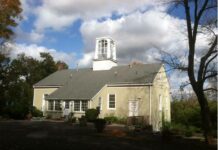
Temple Emanuel and Congregation M’kor Shalom members took separate votes on Jan. 24 on whether to unify their Reform synagogues, both based in Cherry Hill, New Jersey.
All congregants on both sides voted, according to M’kor Shalom President Drew Molotsky. And 98% of them voted to come together in a larger Jewish community.
“It was pretty unanimous,” Molotsky said.
As the president explained, the South Jersey communities are living in a time of declining synagogue attendance. Their congregations declined from more than 1,000 members on each side to between 300 and 350 at the time of the vote, according to Emanuel President David Chasen. Therefore, it just made sense for them to combine members and resources.
M’kor Shalom was created from splitting apart from Temple Emanuel almost 50 years ago, according to Chasen. And by the 2000s, temple leaders began discussing a possible reunification. They just didn’t want to choose between their respective rabbis. But Emanuel’s senior rabbi, Jerome P. David, retired last year after a 47-year run.
Now, though, the hard part begins: bringing two still-sizable institutions together.
At the very least, they know the building into which they’ll be moving: Temple Emanuel’s home on Springdale Road. They also know who the senior rabbi will be: M’kor Shalom’s
Jennifer Frenkel.
Temple Emanuel’s structure is younger and has less deferred maintenance and a lower mortgage, according to Molotsky. And Frenkel is the only senior rabbi left between the communities. Emanuel’s rabbi, Marc Disick, is filling in on an interim basis.
Everything else, though, is up in the air, and the congregations have until their July 1 unification date to figure it all out, per the M’kor Shalom president.
As spring begins, synagogue leaders have at least determined their process for moving forward.
A Joint Oversight Committee started meeting before the vote. Since then, Molotsky and Chasen have opened a Transition Committee with a team of five and a point man who reports back to the Oversight Committee and the presidents.
Between 50 and 60 people are helping the Transition Committee focus on five key areas: finance, operations, ritual, community and legal.
Some of the bigger tasks include selling M’kor Shalom’s property on East Evesham Road and putting the money into the new synagogue’s fund, transferring other assets and liabilities into the merged entity, coming up with a new name, establishing the unified institution’s charitable organization status, moving ritual items into Emanuel’s building, purging unnecessary items and finding offices for staff members.

From a more public-facing standpoint, the congregation needs to develop a bar and bat mitzvah process that both communities agree on. They have, at least, sorted out conflicting bar and bat mitzvah dates, according to Molotsky, as parents were amenable to changes.
The transition requires hours of extra work each week around the existing schedules of the people involved, most of whom are not synagogue employees. But it’s just a lot of work; there are no real issues.
“Open communication and a lot of meetings,” Chasen said.
One aspect of the transition, though, may be difficult.
The unified temple may not be able to keep every employee from the old congregations, according to Molotsky. Each community has office and support staff members, and transition leaders still need to ask them if they want new roles and figure out if the new synagogue will have enough roles to satisfy everybody.
Both preschools and religious schools are going to finish their 2021-’22 years, then determine which teachers want to stay and how many spots might be open for applicants.
They will just have to do so together, instead of separately.
Right now, too, the Reform institutions have merely doubled their executive committees and boards of trustees. There are two people in each executive position, two vice presidents, treasurers and financial secretaries, among other roles. There are also 24 people on the board of trustees, a combination of the 12-person bodies from each synagogue.
That is going to be the situation for a year, according to Molotsky, at which point the new board will “figure it out,” he said.
But work is less difficult when the mission is clear and when most people believe in it. Frenkel, for her part, called the unification “exciting.” The rabbi believes that, after two years of isolation during the pandemic, Jews are looking for answers to deep spiritual questions like “what community can mean to one another,” she said.
“How we journey forward together and make the ordinary sacred,” Frenkel explained. “That depth of living. People are looking for that.” JE






